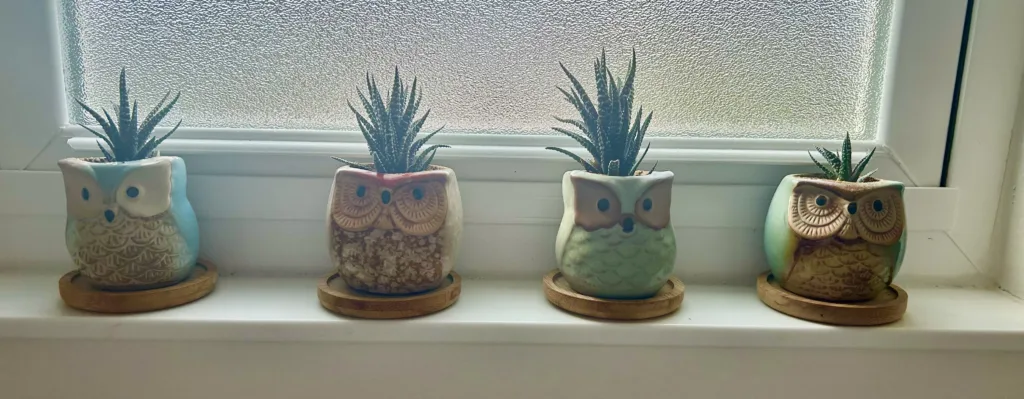Are you a succulent lover looking to expand your collection? Or maybe you’re new to gardening and want to start with low-maintenance plants that have unique textures, shapes, and colors? Look no further than Korean succulents! These fascinating plants have become increasingly popular in recent years, thanks to their ability to thrive in a variety of environments. In this ultimate guide, we’ll cover everything you need to know about growing and caring for these succulents, including pot types, soil requirements, light and water needs, fertilizer recommendations, and propagation tips.
Just a few Korean Succulents are: Sedum Sarmentosum, Crassula Ovata ‘Hobbit’, Echeveria Pilosa ‘Etna’, Sempervivum Arachnoideum ‘Cebenese’, Graptopetalum Paraguayense ‘Ghost Plant’, Pachyphytum Oviferum ‘Moonstone’, Aechmea Fasciata ‘Silver Vase Plant’, Graptoveria ‘Fred Ives’, Haworthia Limifolia ‘Fairy Washboard’ and Graptopetalum Superbum.
Pot Type
Korean succulents can be grown in a variety of pot types, including clay, ceramic, glass, and plastic. The most important thing is that the pot has drainage holes to prevent water from accumulating and causing root rot. Some Korean succulents have shallow root systems, so a wide, shallow dish may be ideal for them. Alternatively, taller succulents will appreciate a deeper pot that allows for more soil volume.
Soil Type
When it comes to soil, Korean succulents prefer well-draining, sandy or gritty soil that mimics their natural environment. Avoid using garden soil or potting soil, as these tend to hold onto moisture and can suffocate the roots. Instead, consider mixing your own soil using one part perlite or coarse sand, one part coconut coir or peat moss, and one part small gravel or pumice.
Light and Water Requirements for Korean Succulents
Most succulents prefer bright, indirect sunlight, but some can tolerate full sun or partial shade. Aim to give them at least 6 hours of bright, indirect light per day, either by placing them near a sunny window or using grow lights. As for water, Korean succulents are drought-tolerant and can go long periods without it. Water them only when the soil is completely dry, and be careful not to get water on the leaves or stem, as this can lead to rot or fungal disease.
Fertilizer Type
Like water, Korean succulents don’t require a lot of fertilizer, but they can benefit from a light feeding every few months during the growing season. Choose a succulent-specific fertilizer with a balanced NPK ratio (such as 10-10-10 or 7-7-7), and dilute it to half strength before applying. Avoid fertilizing during the winter months, as succulents enter a period of dormancy and don’t require as much energy.
Propagating Your Korean Succulents
If you want to expand your collection or share your Korean succulents with friends, propagation is a great option. Korean succulents can be easily propagated using stem cuttings or leaf cuttings. Simply take a healthy cutting, let it dry out for a day or two, then stick it into a pot of well-draining soil. Water sparingly and wait for new growth to appear. Some Korean succulents can also produce offsets or pups, which can be separated and potted up on their own.
Happy Gardening!
These succulents are a delightful addition to any collection, with their unique textures, shapes, and colors. By following these tips for growing, caring, and propagating Korean succulents, you can ensure they thrive in your environment and bring you joy for years to come. Remember to choose a well-draining pot, use sandy or gritty soil, provide bright but indirect light, water sparingly and feed lightly, and don’t be afraid to propagate and share your succulent babies with others.
Please be sure to check out my Gardening Blog Post Page for more tips on all types of gardening. Including Seed Saving, Seed Starting, Orchids, Water Gardening, Coldframe Gardening, Indoor Bulb Gardening, Hydroponics, Container Gardening, Mums, Herbs, African Violets, planting Bulbs, Flower Gardening, Vegetable and Fruit Gardening, Indoor Houseplants of all kinds, Cactus, Succulents, Hanging plants, Deer resistant plants and even Bird, Bee, Butterfly and Hummingbird Gardens!

